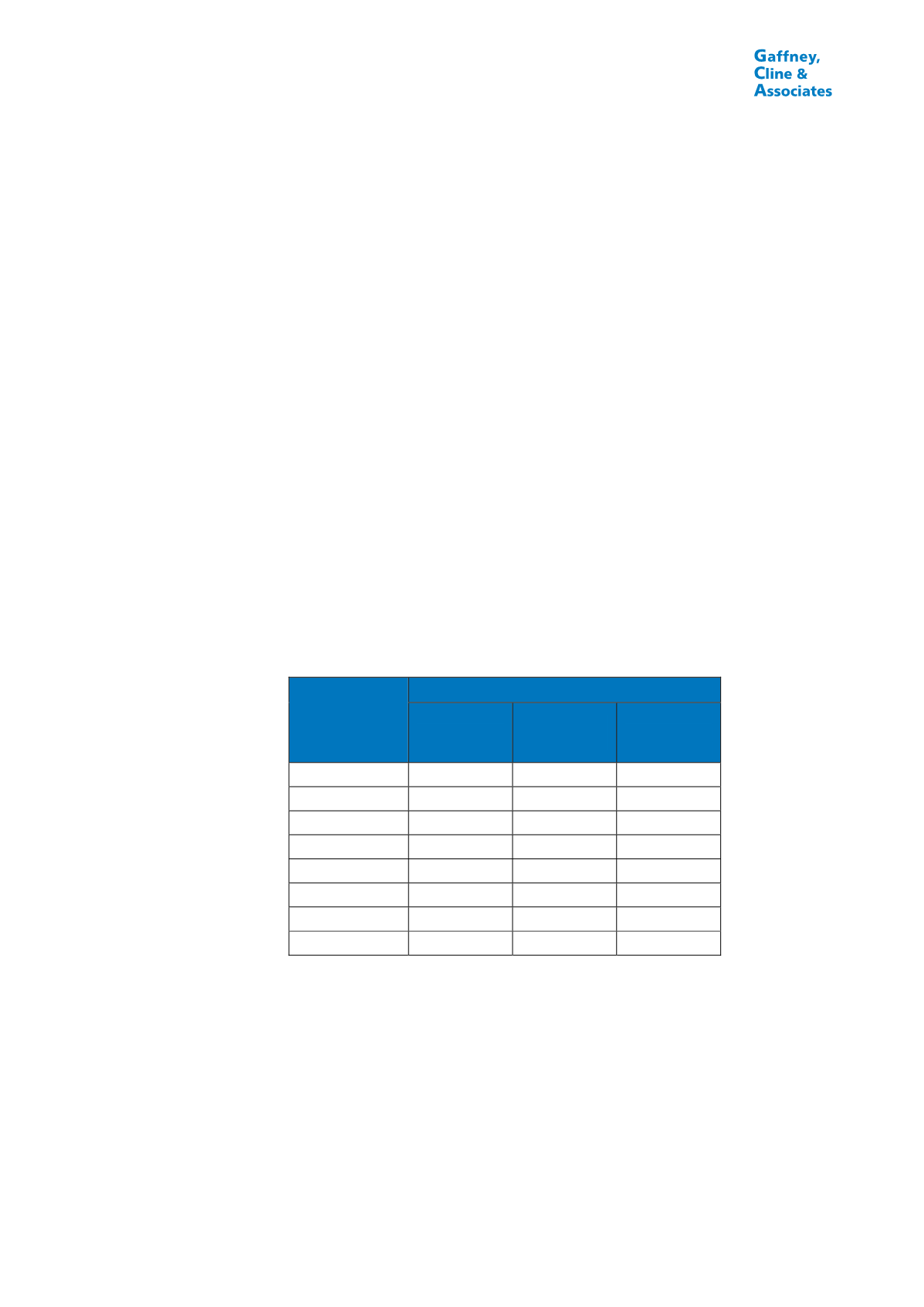
Kuwait Energy
EL-12-211107
28
The producing reservoir in all the existing wells except Diaa-1 is the Middle Cretaceous
(Cenomanian) Upper and Lower Bahariya Formation (Figure 1.2), comprising sandstones
interbedded with siltstones and carbonates. The sandstone units are considerably thicker
in the Lower Bahariya than the Upper Bahariya, where the individual units are potentially
isolated. Diaa-1 produces from sandstone in the Lower Cretaceous Kharita Formation.
Production forecasts have been made by decline curve analysis for the existing wells in
ERQ, using analogy to estimate the decline rate for those wells with short or no
production history. This is complemented by a volumetric approach, which was used to
constrain the decline curve forecasts and to estimate the potential for additional wells.
Six new wells are planned: Al Zahraa-4 and Shahd SE-9 in 2014, a side-track of Rana-2
(which missed its original target), Shebl-2 and (in the 3P case only) Al Zahraa-5 and
Shebl SE-10 in 2015.
The development plan for ERQ calls for wells to be produced first from the Lower
Bahariya, and later to be recompleted and fractured for production from the Upper
Bahariya. There is little production to date from the Upper Bahariya Formation in ERQ.
Only Shahd-1 has produced at a significant rate (up to 530 bopd), while hydraulic fracture
treatments in Ghard-2 and Rana SE-2 in 2010 resulted in production rates of 40 bopd or
less.
Table 1.3 shows the breakdown by field of the Reserves attributed to ERQ.
TABLE 1.3
FIELD LEVEL BREAKDOWN OF RESERVES, ERQ, EGYPT,
AS AT 31
st
MAY, 2014
Field
Gross Field Oil Reserves (MBbl)
Proved
Proved +
Probable
Proved +
Probable +
Possible
Al Zahraa
893
1,484
3,182
Shahd SE
8,211
13,014
19,927
Shahd
136
263
393
Ghard
123
414
726
Rana
178
295
429
Diaa
107
184
236
Shebl
31
169
392
Total
9,679
15,824
25,285
Notes:
1.
The Reserves shown here are included in the Reserves shown in Table 0.2.
2.
Totals may not exactly equal the sum of the individual entries due to rounding.
Future cost estimates have been provided by KE. Key elements are as follows:
US$3.5 MM per well for each new well;
US$2.3 MM for the side-track of Rana-2;
US$0.24 MM to recomplete a well in the Upper Bahariya, including hydraulic
fracturing (other work-over costs are included in OPEX); and


